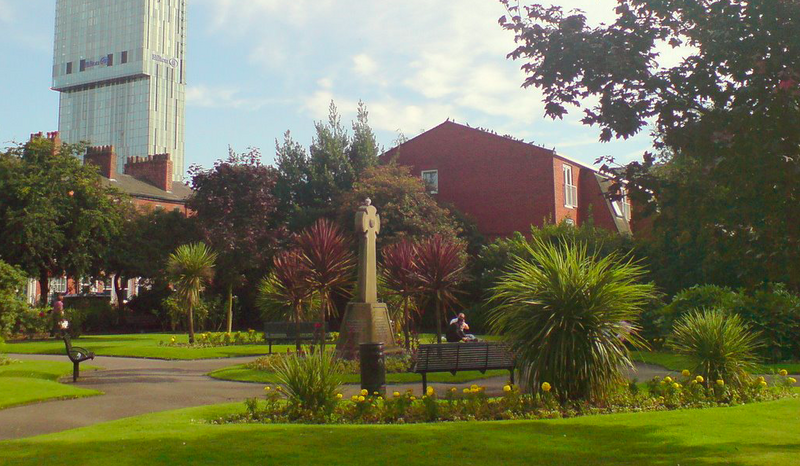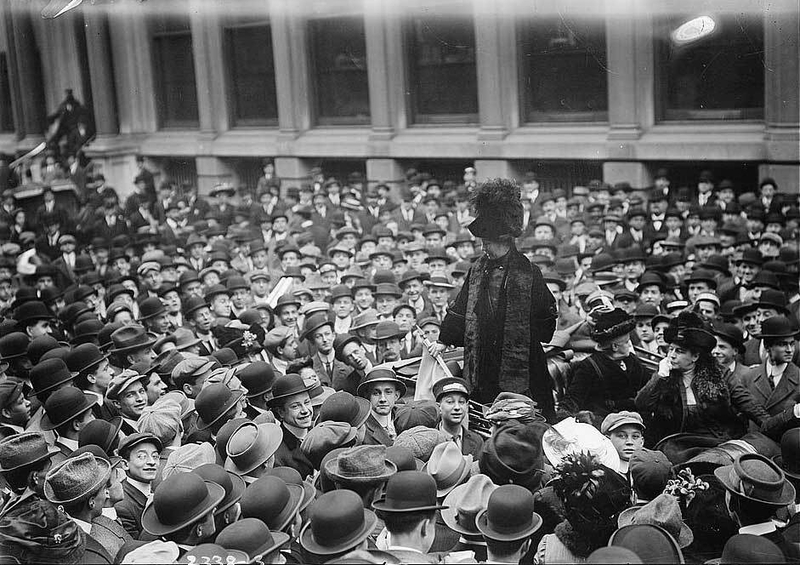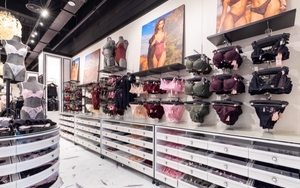Manchester can be a true tourist city, but there are key areas in which to improve, says Jonathan Schofield
I love this city. I guide this city. I extol its many and manifold virtues to hundreds of guests and locals every year. The place fills me with pride. Manchester, the people, the city scene, the on-going story, is endlessly fascinating and appealing.
This is evidenced by the huge upswing in visitors I’ve seen year on year for more than two decades. Recent official figures prove the importance of tourism to modern Manchester. Greater Manchester’s tourism sector is worth £7.9 billion and supports 94,000 jobs. The region attracts 119 million visitors per year; 11 million that stay and 108 million day visitors. This means it’s the largest key sector in the region, outstripping others such as the financial and professional services, life sciences and creative, digital and tech.
On 11 October this year, at the Greater Manchester Tourism Conference, several commentators in the city were given an eight minute soapbox as Dictator for the Day. The theme was how to improve Manchester’s tourism.
I raged about the lack of attention to detail.
My contention is that aside from maybe one missing museum we have all the visitor attractions we need. Now we need to think small, and ignore the macro for the equally important micro. Out with the capital projects in with the personal grooming of the city centre, the hair combing, the polishing of the shoes.
Here are my main points with a couple added. Most of these points should be standard for any city with aspirations to be a major destination. Manchester needs to play the tourism game in all aspects.

Attention to detail (part one): cleanliness is next to…tourist approval
Walk over the city centre at certain times of the day, particularly weekend mornings and it can be disgusting. Of course if people litter, spill coffee and vomit, and rough sleepers defecate, it isn’t the fault of any agency or organization, but that is not the issue. Problems have to be faced. Shifts for street cleaners have to be altered and the streets cleaned so they are as spotless as those of our Northern European counterparts. Occasionally the city centre can be spotless and I have visitors who notice this, at other times it’s terrible. The national government’s austerity programme has hit the northern cities hardest but one-eyed social media doesn’t look for understanding or reasons, it spews out immediate reaction. But while much of this is a problem for the city council it’s not just something for local government alone.
Attention to detail (part two): corporate and commercial civic pride?
This is about civic duty. Every retail, food and drink business, office and so on with a ground floor presence should want to show they have self-respect and at the same time want to help out the local authority in these times of austerity. Commercial premises should clean the area in the front, back and sides of their premises, to the kerb line at a minimum. Even if this involves swilling away sick, or scrubbing off a coffee stain. Don’t complain about the amount you pay to local government or in rents to a landlord just show a bit of pride and sort it yourself. It should be self-interest anyway, presenting a good impression to customers etc. I say let’s all pick up one piece of litter everyday that hasn’t been generated by us and put it in the bin.
I’ll be doing an article on how Manchester United cleans the area around the stadium post match, after Trafford Council gave up responsibility for this. This is done for pride but also in self-interest, the club has tours starting at 9am the following morning with visitors from around the world. Network Rail should try very much harder around their land-holdings. The restaurants in Chinatown need to look after the alleyways in their area much more consistently.
Other cities make their green spaces consistently pretty and well-maintained. We don’t.
Attention to detail (part three): how green does our garden grow?
Why are Manchester city centre’s pocket parks, say Parsonage Gardens, St John’s Gardens, Sackville Gardens only sporadically maintained? Why aren’t we hanging basket happy? Why does Cathedral Gardens have so much astro turf and how come its theoretically lovely water feature only works once every blue moon and its fountains never work? Will Piccadilly Gardens’ fountain finally function adequately (and why did we need a really stupid and dull water feature in the otherwise splendid St Peter’s Square)? Other cities make their green spaces consistently pretty and well-maintained. We don’t. Parsonage Gardens is next to Deansgate and is simply dull with poor seating. Lincoln Square is only a square because it says so. Newcastle for example is far better than Manchester at this. If we want to be serious about tourism we need to shape up.

Attention to detail (part four): wayfinding
After ten years of costly debate, meetings, and reports (I know I've been in most of them), wayfinding has never been sorted. How does a tourist leaving Piccadilly Station easily find their way to the main central destinations without a map or good luck? Simple. They don't. They have to stumble about until they happen upon them. The Visit Manchester staff at the information centre on Portland Street, the city tour guides and the Business Improvement District (BID) hosts do a fine job but a good wayfinding scheme on city streets would greatly improve movement around the city for visitors.
We are particularly poor as a city about telling our story
Attention to detail (part five): telling the story
We are particularly poor as a city about telling our story – and what a story. There are scarcely any displays in key locations outside Castlefield explaining context and the city’s significance – indeed, Manchester’s approach on the street at key locations in communicating what has been achieved and what people can see is virtually non-existent. Tourism is a visceral foot-to-the-ground experience, pacing the city, learning as you go. Smart phones, the great hope of tourism authorities everywhere who want to cut costs, help, but do not replace the need for better ground-level information. Why when I walk around St Paul’s in London is there a splendid series of explanatory boards; even in little Kendal there are information panels everywhere telling its not very significant history, but they still animate the town and help bring it to life.
Attention to detail (part six): waterways
The most pleasant and lovely route through the city centre from Ancoats through to Castlefield should be along the Rochdale Canal. No traffic, tranquil waters, amazing architecture, exciting locks and plunges under roads into tunnels, loads of wildlife…what an asset. What a mess. Anybody with any sort of olfactory capacity will not want to linger under any of the bridges and tunnels. They probably won’t want to look on the floor either. Before we talk of any landscaped ‘highline’ on former viaducts, we need to sort this first.
...good grief we have a dark city centre
Attention to detail (part seven): dark city
All right this isn’t a cheap one, but good grief we have a dark city centre. Go across Northern Europe again and the main buildings in the major cities are lit beautifully, down lit usually so as not to pollute the night skies. In Manchester’s central areas the Town Hall, the Cathedral, John Rylands Library, The Royal Exchange, the University block, Central Library, Manchester Art Gallery should as a minimum by illuminated. Businesses should be encouraged to light showpiece commercial premises; some do, most don’t. Manchester is very dark above street light level. We have a good local example of energetic exciting lighting: the illumination of the Quays from MediaCity, via the Lowry to the Imperial War Museum makes for a dynamic and attractive evening environment.

Attention to detail (part eight): selling the region - what is the matter with Manchester Airport?
I was in Nuremberg and Beirut airports this August (yeah I know, weird holiday). They both had shops selling their regional or national specialities. I’ve seen these shops in just about every airport I’ve been to, including British ones such as Aberdeen. So why not in Manchester Airport? Where are the shops representing the North West and all its fabulous hams, cheeses, biscuits, beers, music, literature and the usual bric-a-brac. A look in WH Smiths in the airport is laughable. I was in Terminal One arrivals less than a week ago and WH Smith were selling London buses as souvenirs.

Big idea (part one): The People
Start young. In our schools the importance of the city and its region should be reiterated time and again. Ongoing innovations pioneered in the region should be underlined at every opportunity. There should be tours for kids not only to specific museums or attractions but city-wide so that an idea of the scale of Manchester and its surrounding towns, the range of amenity and the achievement is highlighted. We need to build pride and a sense of identity from a young age, and we need to give it shape. We have to show young people there is more to the city than United, City, shops, gig venues and a few bands. All this could fit in with established national curriculum guidelines.
Liverpool has one. Glasgow has one. Manchester doesn’t
Big idea (part two): A Museum of Manchester
Liverpool has one. Glasgow has one. Manchester doesn’t. Yet our impact on the world has been far greater. It’s might be good that several of our museums look at aspects of the city’s story, the Museum of Science and Industry, for example, has the Revolution Manchester gallery looking at the city’s scientific and technological contributions, but we really need something that reveals the bigger picture. We need a museum or gallery that brings the city region’s politics, diversity, society, culture and art together and also examines the personalities that made a contribution and still do to the city and to national and global life.

So what is the problem…
So why do we suffer from this lack of attention to detail, aside from a lack of cash? I’ve written about this before but I still feel somewhere in the backs of the minds of many city councillors, business leaders, teachers, academics and many native Mancunians, there persists a nagging worry that we aren't good enough, that we aren't really a tourist city, not in the way London or York is.
It’s a Manchester neurosis that gets in the way of getting over the line when it comes to maximizing the tourist experience. It gets in the way of thinking coherently about the tourism experience and getting that detail right rather than finding millions to pump into a new gallery.
This lack of confidence may come as a surprise.
It’s good to remember that if a city is better for visitors it will certainly be better for its citizens.
Many people in Britain’s other main cities feel Manchester shouts too loudly about itself. I’ve had their representatives tell me this face-to-face. But when I tell Mancs I’m a tour guide for their city, they invariably say, “What do you show them?” I throw the question back and often they have no clue. This is saddening. But if as they walked around and found the fountains working, the little gardens immaculate, the streets and even the backstreets and canal sides clean; if they found the story of their city explained as they went and saw the bars, restaurants, shops and offices were out hosing down their frontages, then maybe that attitude would change.
As we all know the devil is in the detail, but delight can in the detail as well. It's curious that an issue that seems the easiest thing to fix for Manchester tourism has proved the most intractable. It’s good to remember that if a city is better for visitors it will certainly be better for its citizens.















